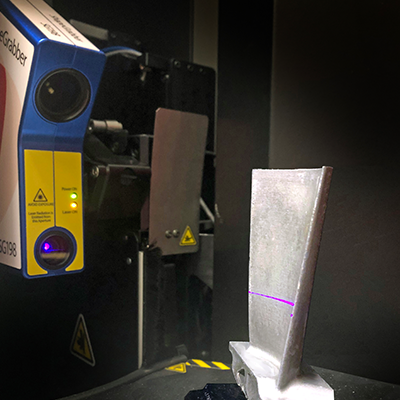 Not all 3D scanners are created equal. One consideration when selecting a scanner is the nature of the environment in which it will be used.
Not all 3D scanners are created equal. One consideration when selecting a scanner is the nature of the environment in which it will be used.
In a manufacturing environment, an industrial 3D scanner – such as those we produce at ShapeGrabber – is ideal. These 3D scanners are designed to function in noisy, dusty manufacturing environments and in ambient lighting. They are also designed for use by technicians and operators rather than engineers or scientists.
Ease of Use
In most industrial manufacturing environments, manpower is available in the form of operators and technicians. Engineering and scientific resources are less available and more costly. For rapid inspection, those functions must be “designed in”.
Because ShapeGrabber 3D scanners are designed for manufacturing environments, they are very accessible and easy to use. After only a day or two of training, an operator can quickly set scan parameters for an inspection project. Once that setup is complete, nearly any user can place a part on the scan table and simply press a button to scan the part. Software programs do not need to be written for each inspection project. 3D laser scanners are also simpler to use than their traditional inspection counterparts. Coordinate measuring machines (CMM) require a programmer to create a unique inspection program for each part. Calipers require specialized engineering skills to make manual measurements and calculations. Even gauges, which can be used by operators, must first be designed by engineers.
Robustness
When inspection speed is paramount, it is not efficient to have to move the inspection process to a lab or cleanroom. In addition to being easy to use, a ShapeGrabber 3D scanner is designed for use by multiple individuals. It isn’t a highly-sensitive instrument like a CMM, a fragile scientific instrument, or a shaky tripod-mounted camera assembly. It is a hardened product designed for industrial use.
Speed & Efficiency
As a mature technology (at ShapeGrabber, we’ve been pioneering industrial 3D scanners for almost 20 years and recently introduced our 6th generation of technology), a 3D scanner is ideal in manufacturing environments because:
- It’s fast. Lasers can capture millions of data points in minutes. The complete surface geometry of an entire part can be captured quickly to enable new or better-performing replacement products to be developed.
- It handles complex shapes. Curves and multiple features aren’t a problem for industrial 3D laser scanners. They easily scan the complex surface dimensions of parts and tools that would otherwise be too time-consuming, costly or simply impossible to measure.
- It saves time & money. A 3D scanner saves hours or days of inspection/measurement tasks and results in better-performing parts that reduce manufacturing errors and their associated costs.
To learn more, we recommend these resources:
